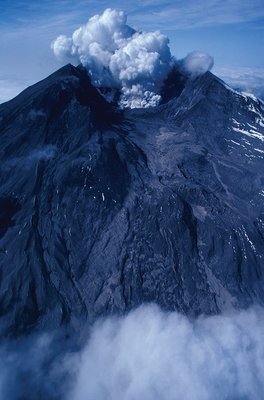
by Geoff Plumlee Thursday, January 5, 2012

Plumlee and his team have worked with USGS colleagues at volcano observatories in Alaska, Cascades and Hawaii to assess potential environmental and health hazards from volcanic ash from eruptions such as the March 2009 Redoubt eruption. Michael Collier, ESW Image Bank
Volcanologists have long been assessing the impacts of volcanic ash and gases on the environment and human health. This effort began in earnest when volcanologists at the U.S. Geological Survey undertook extensive studies of the environmental characteristics of ash from the 1980 Mount St. Helens eruptions. These studies included water leach tests showing that rain falling onto fresh ash can be quite acidic due to the liberation of acidic gas species that condense onto ash particles in the eruption cloud. Studies of other eruptions from around the world have repeatedly demonstrated that fluoride can be leached in sufficient quantities to trigger fluorosis (a bone disease caused by too much fluoride) in livestock or wildlife that drink ash-affected water or eat ash-coated vegetation.
For human health and safety, volcanologists have also paved the way in establishing collaborative efforts with health scientists. Research and outreach efforts following the Mount St. Helens eruption have helped enhance the public’s understanding of health and safety hazards posed by the ash. Similarly, volcanologists at the USGS Hawaiian Volcano Observatory have established excellent collaborations with the public health community to understand and communicate to the public the health hazards associated with exposure to volcanic fog (vog) emanating from Kilauea volcano. Still other researchers have made substantial advances in understanding important toxicological characteristics of volcanic ash. A key culmination of these efforts was the formation of the International Volcanic Health Hazards Network.
© 2008-2021. All rights reserved. Any copying, redistribution or retransmission of any of the contents of this service without the expressed written permission of the American Geosciences Institute is expressly prohibited. Click here for all copyright requests.